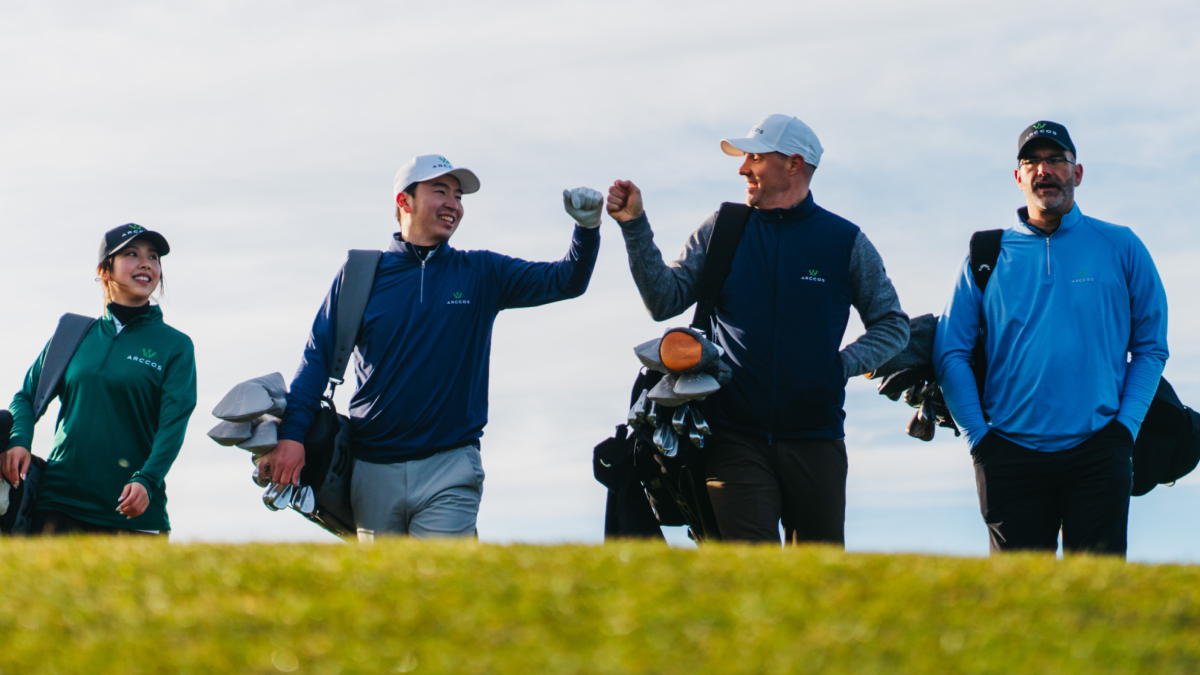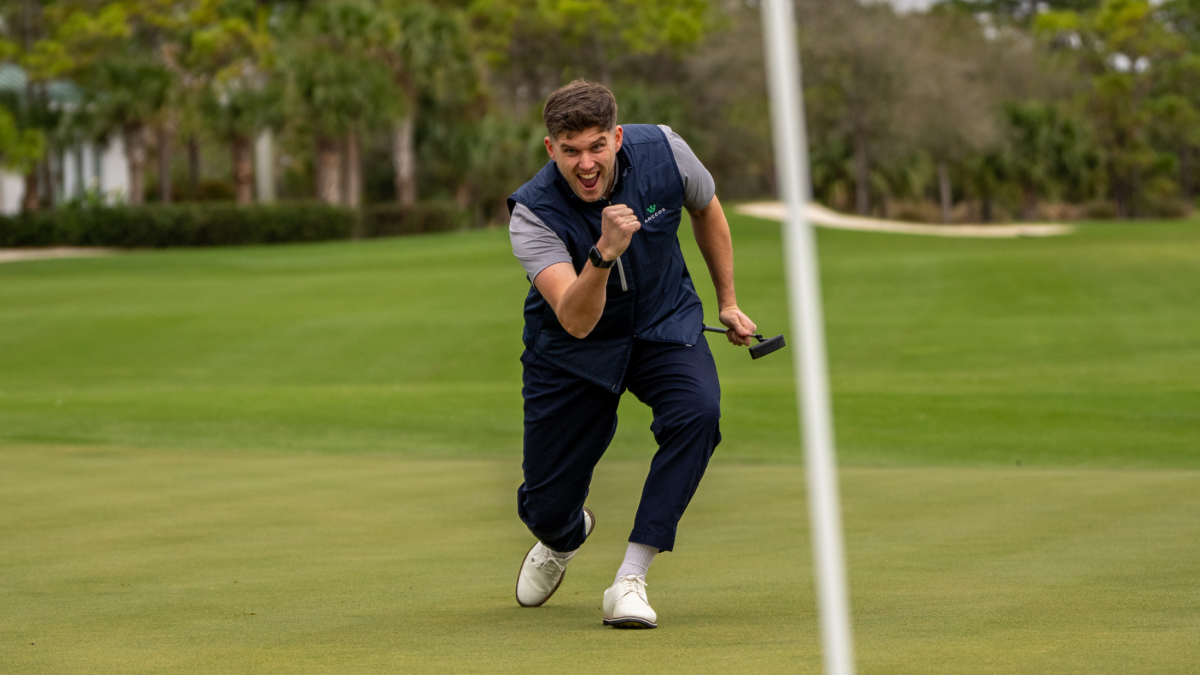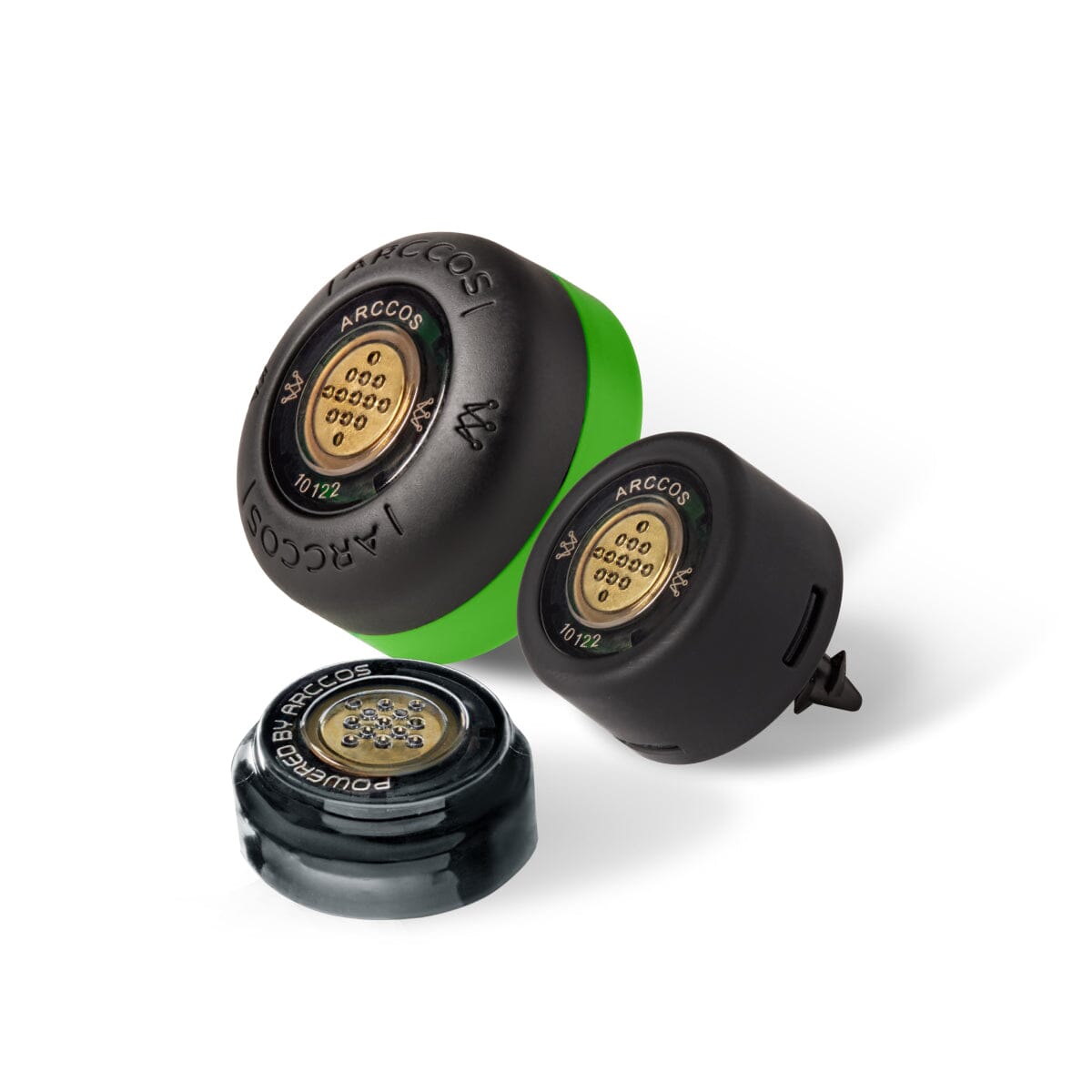Using Hard Data to Make a Complex Golf Shot Easier
The 50-yard wedge shot reveals the intrinsic complexity of golf. At first glance, it seems easy, but it’s much harder than it looks. Using shots from the Arccos database, we can pinpoint exactly how hard: Whether it be from the fairway, rough or bunker, amateurs often leave themselves outside the range of an easy two-putt when faced with this short wedge shot.
With the massive Arccos dataset, we have access to insights from more than 120 million shots taken by players on over 40,000 courses around the world. Using Arccos’ precise course mapping, we zeroed in on shots taken from 40-60 yards and broke them down into three groups based on their origin: fairway, rough or bunker. We further segmented each group based on handicap brackets.

Say an 18 handicapper faces a 50-yard shot from the fairway and his opponent, a 3 handicap, faces a 50-yard shot from a fairway bunker. Arccos data shows the resulting proximity to the hole for the two players will be almost identical, on average. The 3 handicapper will hit the green 62.10% of the time with an average distance to pin of 43.87 feet. The 18 handicapper will hit the green 61.75% of the time with an average distance to pin of 44.01 feet. That situation reversed – the 3 handicap in the fairway and the 18 handicap in the bunker – would result in a difference of more than 22 feet!

Of the three conditions, the bunker is the worst for every handicap group in terms of greens hit and proximity to the hole. And that makes sense: Bunkers provide the most unpredictable lie. You could have a fried egg on soft sand or be sitting in a footprint on wet sand. Varied lie conditions combined with the reality that most amateurs don't spend much of their practice time on bunker play, explains why results across all handicap levels can vary greatly.
Additionally, the drop off in results from the fairway to the rough is dramatic for all handicap brackets. For the 1-5 handicap, trickling into the rough means their odds of hitting the green go down by 10.3%, with the average proximity to the hole moving 7.55 feet further away. Their drop off from the rough to the bunker is less severe, with their odds of hitting the green going down only 4.92% and landing 4.37 feet further away.

Compared to the best players in the world, the numbers predictably leave a lot to be desired. The green hit percentage of PGA Tour pros inside 75 yards is an impressive 87.20%. Proximity to the hole stretches the gap even further. On approaches from 50-75 yards, the Tour average is 17.65 feet. If you watched any PGA Tour golf in the last year, you repeatedly learned that the key to Dustin Johnson’s recent success was a focus on dialing in his wedge distances. This is an area where amateurs can follow suit– one of the few areas of DJ’s game that the average player can emulate.
A Digital Golf Accessory to Analyze Your Swing
Since we, as amateurs, don’t have ShotLink data – and most don’t have routine access to a Trackman – Arccos is an ideal golf shot tracking solution. Users of the system can analyze distance, dispersion, green in regulation percentage and distance to the pin for each club in their bag.
Let Claude Harmon III, one of Johnson’s swing coaches, explain the value DJ put on data prior to winning the 2016 U.S. Open.
“The best example of what data can do for a 15-20 handicapper is Dustin Johnson,” Harmon said. “Two years ago, Dustin’s wedge play was lacking, and he hated practicing his wedges. So he got a Trackman and now uses it mainly for carry distance. DJ will hit wedges for an hour of his warmup, because he doesn’t need to hit drivers. And he’s gotten better by practicing and turning a weakness into a strength with data. With amateurs, we can do what we do with Tour players and hone in on weaknesses. And through all the data Arccos sensors track, we don’t have to guess anymore. The data tells the story for them.”
Armed with this information, any amateur can make smarter decisions, which lead to lower scores, which means you can start scoring like DJ, even if you don’t drive it like him.






Share:
Pros vs. Joes: Analyzing 3-Putts
Arccos Caddie Permitted Under The Rules of Golf